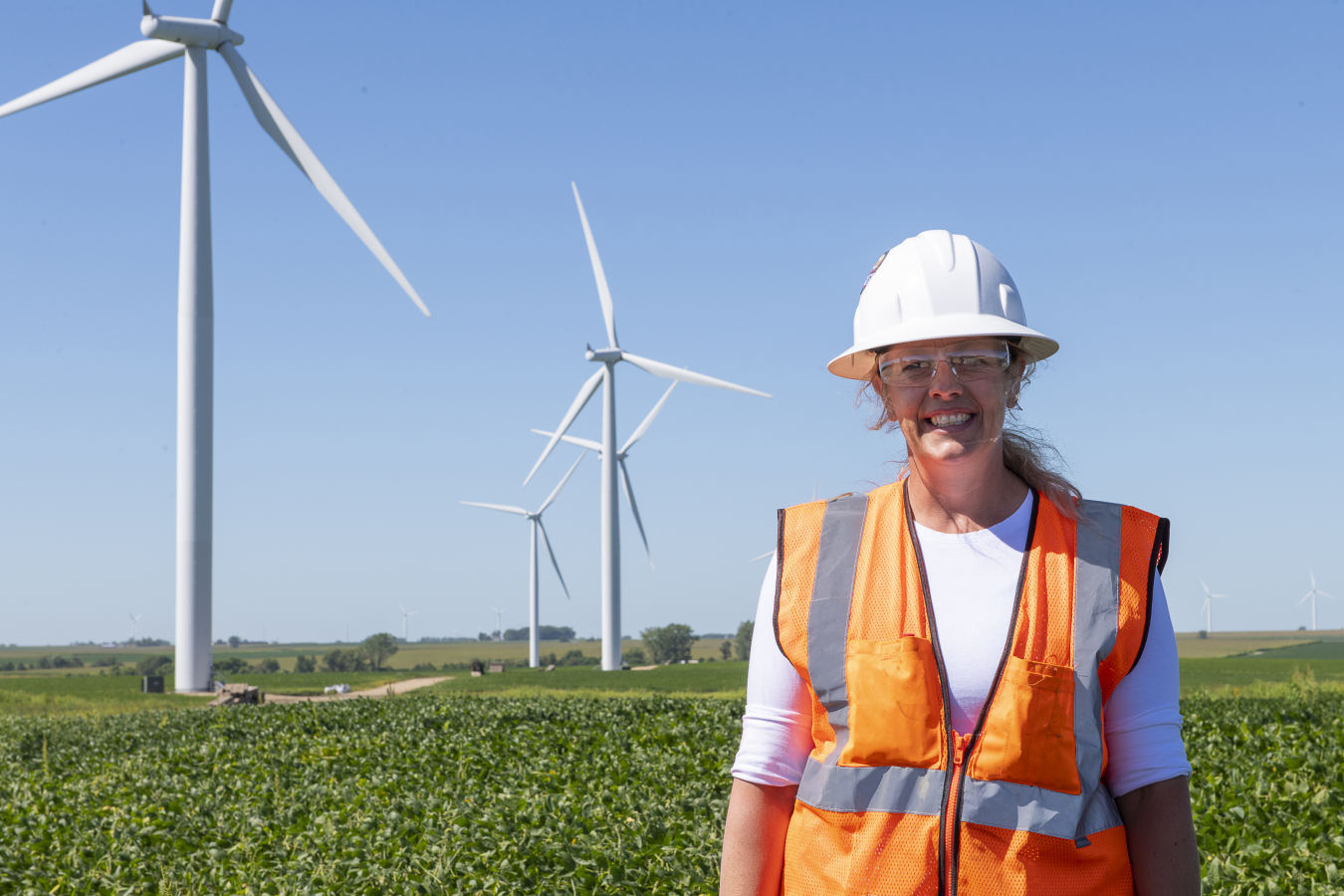Yoder received specialized, hands-on training from the union that enabled her to move up through apprenticeship levels to become a journeyman laborer. She put her skills to work recently on two wind energy projects.

Local union workers like Laura Yoder are common on wind and other clean energy construction sites in Minnesota today, but that was not the story five years ago.
“I went to work for the union because I wanted retirement and health benefits for my family,” said Yoder, whose father and two brothers are also union workers. “I have a son and I can take care of him with my union job. The health and dental benefits are amazing, and I have a good pension.”
Unions Provide Value Throughout Clean Energy Project Planning, Development, and Operation
Labor unions add value to organizations that work with them, from clearing permitting and policy hurdles to hiring highly skilled local workers. According to the 2023 U.S. Energy and Employment Report, 48% of nonunion firms reported that it was “very difficult” to find workers, while only 29% of unionized firms reported this difficulty.
“That’s where union partnership helps,” said Kevin Pranis, marketing manager for the Minnesota-North Dakota chapter of LIUNA. “Because we’re here all the time, we already have a base workforce of people and the network to find more. We can start building that skilled workforce for you.”
Minnesota Construction Sites Changed in 2018
Local union workers like Yoder are common on clean energy construction sites in Minnesota today, but that was not the story five years ago. Many of the workers were traveling from out of state, and developers were rarely hiring local workers.
“The proposition with clean energy had always been that it was going to create good local jobs,” Pranis said. “Minnesota is historically a union state, so it was surprising to realize that these wind contractors weren’t using local union labor but bringing in traveling crews to work on those projects.”
To turn this trend around, LIUNA worked with other building trades unions, environmental partners, and elected officials to advocate at the Minnesota Public Utilities Commission (PUC) and persuade clean energy developers and utilities to prioritize local workforce.
Interested in a wind energy career?
Check out the Wind Energy Career Map for details about occupations and career pathways.
“I was shocked to learn that no one was reporting the number of local jobs created with wind and solar farm projects,” said Katie Sieben, commission chair at the PUC. “As soon as the commission started asking questions and requiring reporting, the benefits became obvious. Project developers even began touting these numbers to justify why their projects were good for local communities.”
The PUC started requiring more transparency and considering projects for approval based in part on whether they would be using local labor. Minnesota utilities also began requiring that clean energy projects be built with union labor.
“A lot of credit for the success of this campaign goes to project developers and utilities,” Pranis said. “We asked them to consider working with us using local union labor, and they stepped up to be early adopters and partners.”
Union Work as Far as the Eye Can See
Today, Minnesota wind farms, solar farms, solar panel manufacturing, transmission line construction, and other clean energy projects are built by a largely in-state, union workforce.
“Of all the projects we’re aware of in permitting or under construction, that’s union work as far as the eye can see,” Pranis said.
Demand for new clean energy projects throughout the state keeps growing. In 2022, Minnesota’s clean energy industry grew twice as fast as the rest of the economy. With support from the Bipartisan Infrastructure Law and Inflation Reduction Act, Minnesota is on track to meet their commitment of reaching 100% clean energy by 2040, resulting in good local jobs for union workers like Yoder.
“I’ve had great opportunities through LIUNA, and I’ve met great employers that will help you achieve what you’re looking for in life,” she said. “That’s why I support the union one hundred percent.”
The U.S. Department of Energy is committed to facilitating quality, accessible job creation in the clean energy economy. Learn more about the Community Benefits Plan framework required in major funding and financing programs supported by the Bipartisan Infrastructure Law and Inflation Reduction Act.
